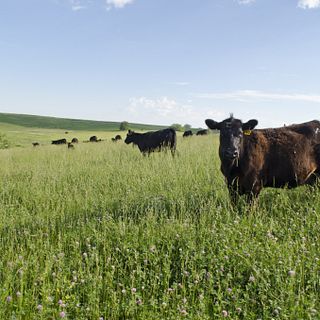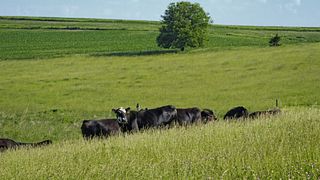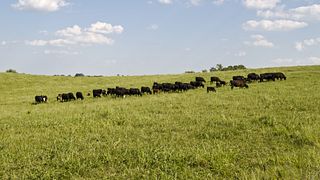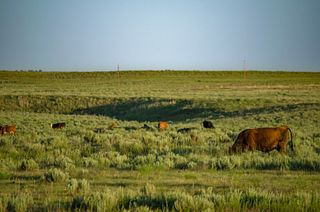
- Home
- Winner Gallery
- Inductees
- Rowe Ranch
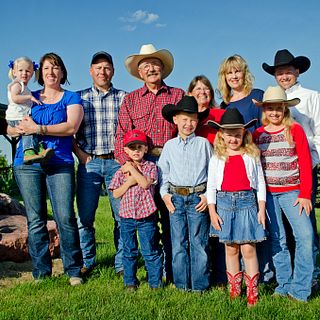
Year Inducted: 2015
Region III
Lorimor, Iowa
Glenn and Bev Rowe, owners of Rowe Ranch in Lorimor, Iowa, were selected as one of seven regional honorees of the Environmental Stewardship Award Program (ESAP). The award, announced during the 2015 Cattle Industry Summer Conference, recognizes the outstanding stewardship practices employed on the ranch. This year’s regional winners will compete for the national award, which will be announced during the 25th anniversary celebration in January 2016.
ESAP is sponsored by Dow AgroSciences, USDA Natural Resources Conservation Service (NRCS), U.S. Fish and Wildlife Service, National Cattlemen’s Beef Association (NCBA) and the National Cattlemen’s Foundation, and is presented to farmers and ranchers who demonstrate a commitment to protecting the farm and ranch land in their care.
“When we bought the land in 1997, most of it was overrun with thistles, locust and cedar trees with very little grass on it. What grass there was, was fescue and other less-desirable forage,” said Glenn Rowe. “Part of it had been farmed for a year, had soybean stubble which didn’t amount to too much and it actually made it a little easier to put new seed in. But, it was a challenge every day.”
The Rowes have partnered with USDA’s Natural Resources Conservation Service on no less than seven projects including rotational grazing, rural water pipeline installation, reseeding and fertilizing after soil testing, internal fencing of paddocks, installing water heavy-use fabric at crossings, and stream bank stabilizations. They maintain at least 23 paddocks, with the largest being 24 acres. Herds are rotated at least weekly and as often as weather conditions dictate. Cows quickly become accustomed to being moved and usually are waiting at the gate to be rotated.
“Our rotational grazing has been a tremendous benefit to the forage production of this part of the country because of it helps us better manage and distribute the grazing pattern of the cattle across the whole pasture,” said Rowe.
Glenn and Bev have transformed nearly their entire property, planting hundreds of trees around their home and dedicating 40 acres of ground to serve as a wildlife refuge planted to trees. Much of their land is managed as grazing land, but about 250 acres is utilized to plant no-till corn and soybeans, which the cattle graze in the fall after harvest. The Rowes have also fenced cattle out of farm ponds and added wide buffer zones to filter water that flows into creeks on the property.
“Our goal is to retain as much of the water on the land as we can and keep it as long as we can before it runs off. If our forage has the opportunity to absorb those nutrients from the water, that helps our forages and it helps the water downstream,” said Rowe. “Hopefully that improves the quality of the water before it leaves our land.”
